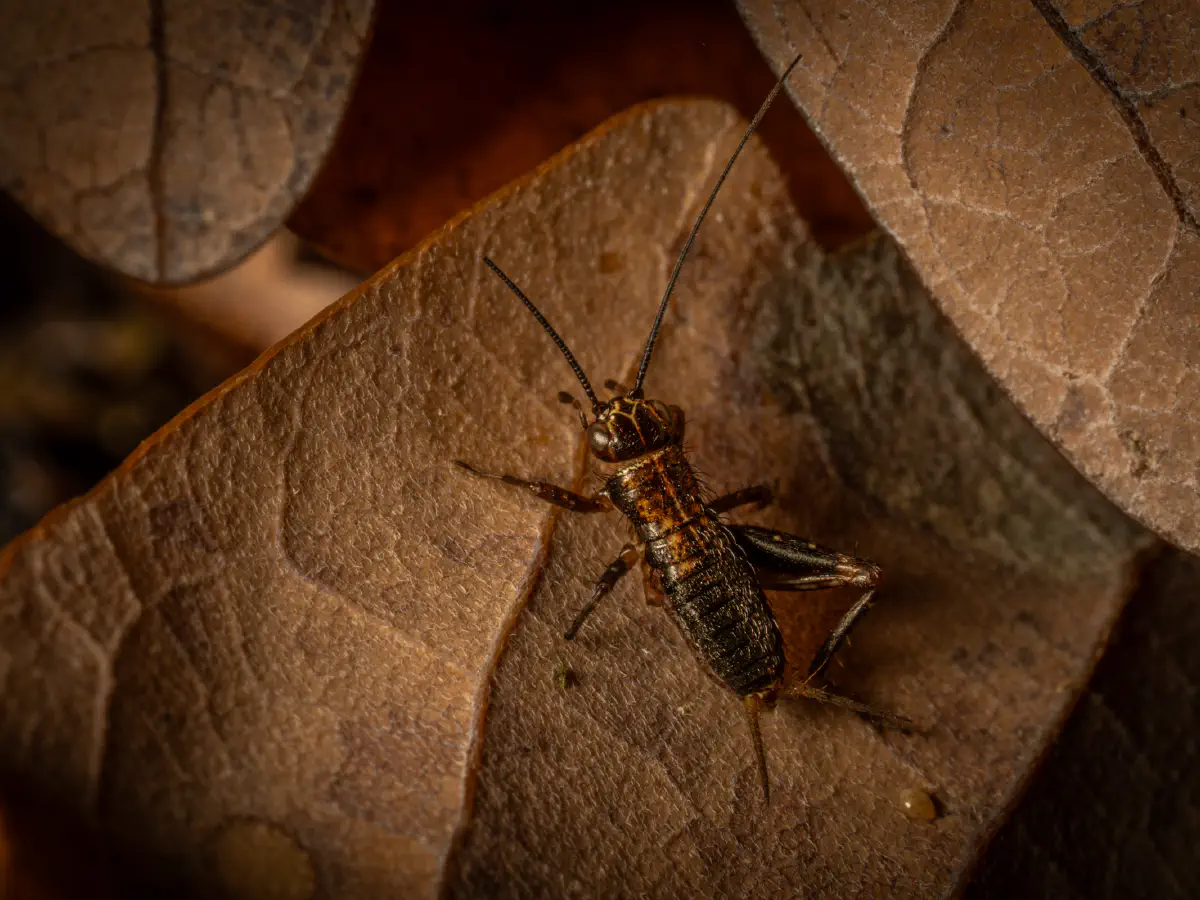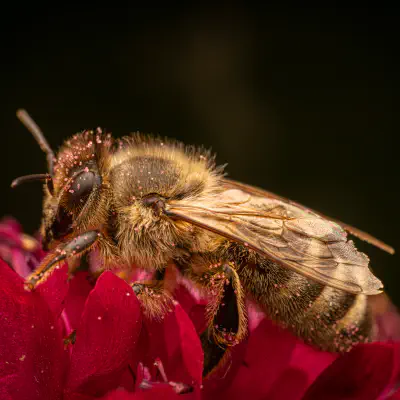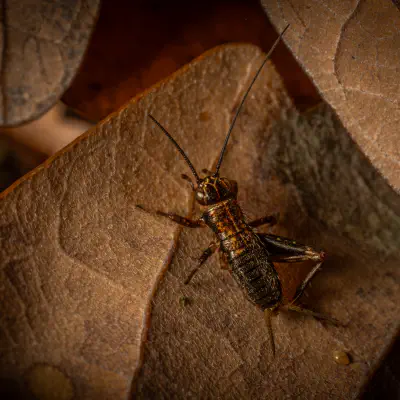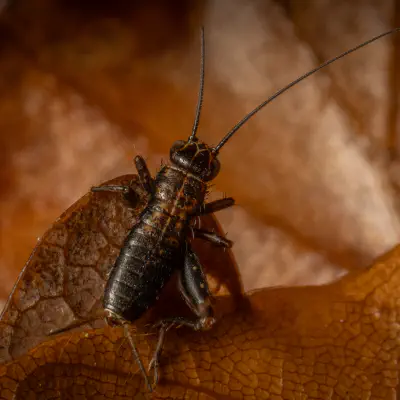This cricket is a small, dark brown, ground-dwelling, grasshopper-like insect with long, thread-like antennae. It grows to about 1 cm (0.4 in). Neither males nor females have hind wings; in males the fore-wings extend half way along the abdomen, while in females, the fore-wings are reduced to rounded stubs. Females also have a long ovipositor at the tip of the abdomen.
Wood Cricket (lat. Nemobius sylvestris)





This is not intended to be a dry lexicon. Personal stories and sensitive articles form the framework for our pictures: „Explained as easy as pie — The biggest threats to bees“
Bees are essential for pollinating many plants and face significant threats from parasites, diseases, pesticides, and environmental changes.



